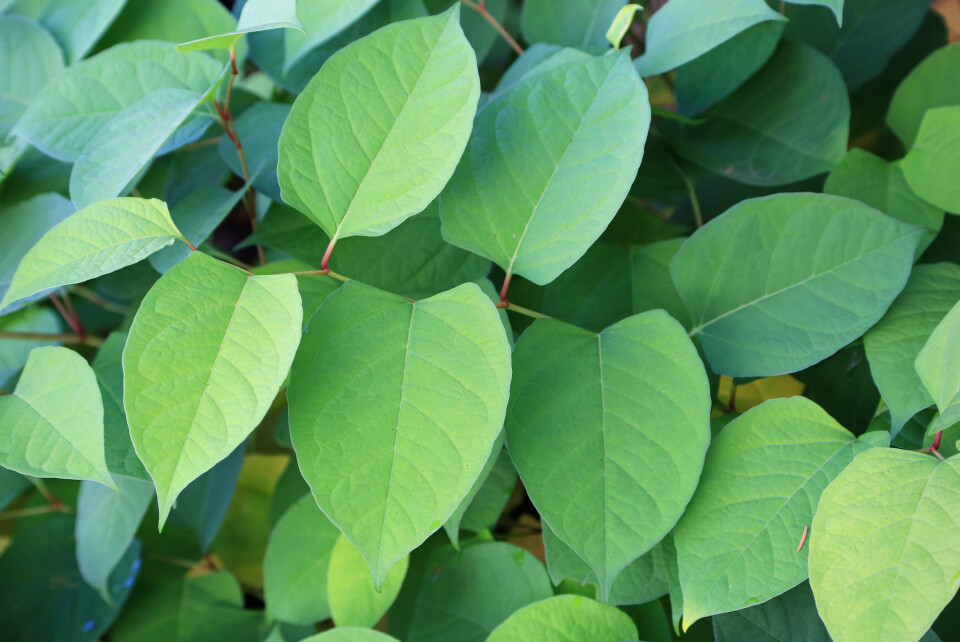-
How to identify lounging lizards in France
Learn about the habitats and behaviours of diverse lizard species, from the common wall lizard to the elusive Western three-toed skink
-
The origins and long history of France’s unique wildlife officers
Connexion talks to Julien Nicolas, who fulfils a role created by Charlemagne in the year 803, tackling wildlife posing a danger to the public
-
Is health insurance required to return to visit England from France?
Certain health access remains free at the point of use for all
How can we stop the spread of Japanese knotweed to our French garden?
This highly invasive species can withstand extreme weather conditions and will resprout if cut

Reader Question: Japanese knotweed is flourishing in the lanes around our house in France, and is coming ever closer - what are our options?
Japanese knotweed (renouée du Japon in French) is one of the world’s most invasive plant species, which can withstand drought, temperatures of up to -25C, high salinity and various different soil types.
It also resists cutting, as it quickly resprouts from its roots, and is not affected by any diseases or parasites.
The knotweed’s root system can cause damage to concrete foundations, buildings, roads, paving slabs, swamp other vegetation, harm biodiversity and enable fires to spread.
Are there laws requiring me to remove it?
Japanese knotweed is recognised as being ‘invasive’ under a 2015 French law, but it is not included on the EU list of ‘invasive exotic [plant] species of concern’, because it is already widespread across the continent and subject to various different control measures.
Therefore, residents who find the plant on their land are under no obligation to remove it, although regional authorities may apply their own rules.
Your mairie should be able to advise you if there are any measures in place locally relating to the plant, such as planning bylaws on invasive species. If the knotweed is affecting a public space such as a lane, the mairie may also be able to take action to manage the situation.
How can I get rid of Japanese knotweed around my house?
Residents who are affected by the spread of Japanese knotweed are advised to apply glyphosate to it by cutting the stalks and then spraying the herbicide onto the remnants still in the ground.
This should kill the invasive plant, but also any other plants that it comes into contact with, so caution is advised. It is also possible to obtain glyphosate in the form of a gel if you want to avoid damaging your other plants in the process.
You should then wait a week before trying to uproot the knotweed, so that the herbicide has time to penetrate its roots. When you do go to remove it, make sure that you have brought up all the roots using a garden fork, bearing in mind that they can be up to a metre deep.
It is very likely that you will need to apply glyphosate more than once in order to get rid of the knotweed once and for all. Gardeners are advised to use it twice a year, once at the end of spring and once at the beginning of autumn.
If you do not want to use glyphosate, you will need to keep cutting back the resprouting stems until the plant finally stops growing, but this can be a laborious process. You might have to mow over the plant every week or so to weaken it.
It may also help to lay a black tarpaulin sheet over the knotweed and any areas it is threatening to spread to in order to cut it off from the sunlight.
If you are really struggling to do away with your Japanese knotweed problem, it may be best to pay a professional who specialises in eradicating invasive species to help you.
A spokesperson for the Fédération française jardins nature santé also recommended that you cut the plant before it goes to seed, and then dig up the area to get rid of all of the roots.
“In France, we also introduce goats who love grazing on this plant!” she added.
Related articles
Does France have a knotweed law?
Your French garden - growing clematis in containers and pots























